There Is No Way A Weed-Doer Was Behind The Hollyweed Sign
An investigation.
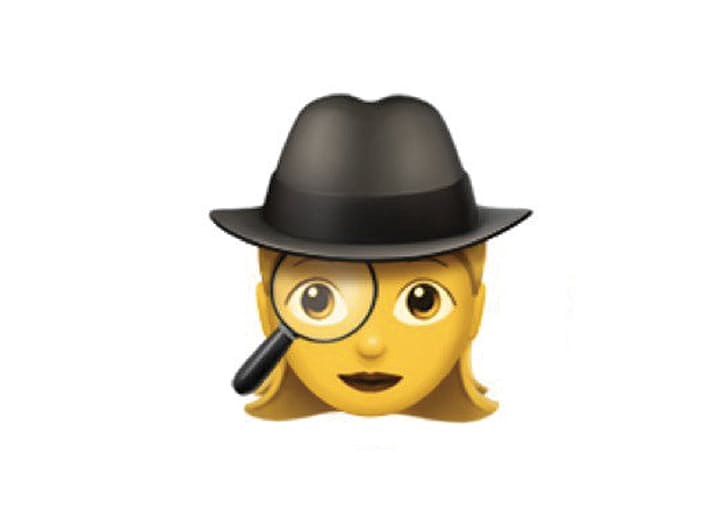
The gods of online blessed us with a New Year’s Day miracle Sunday by presenting 2017’s first piece of viral art: in the dead of night, Los Angeles’ iconic Hollywood sign was vandalized to read “Hollyweed.*” That’s right—as in drugs. Pot drugs.
This means that thousands of Angelenos woke up January 1, parted their curtains, and were greeted by the broad-scale, 420 equivalent of carving “Korn” into a bar bathroom stall there in the Hollywood hills. It looked like this:
My city. ✨welcome to #hollyweed https://t.co/WEFfwralKS
The feat was accomplished by hanging black cloth over sections of the pre-existing O’s and draping white cloth across their centers to create the illusion of a lower-case E. It was no small task according to the LAPD:
Security footage recorded at 3 a.m. Sunday showed a “lone individual” climbing up the mountain, scaling the sign’s ladders and hanging tarpaulins over the O’s to change them to E’s, said Sgt. Guy Juneau of the Los Angeles Police Department’s Security Services division.
It could have been a New Year’s Eve prank, Juneau said, or the work of “a thrill seeker.”
Now I’m all for a good joke—and lord knows I love performance art—so I’d give this piece a 10/10 on the pleasing scale, but I still have one quick thought that the rest of the media seems to be neglecting to notice: there is no way a weed-doer would be capable of pulling this off.
For starters, the sign’s location is in conflict with the drug’s fundamental sensibilities. According to Hollywoodsign.org, the site boasts “a tall perimeter fence with razor wire, 24 hour electronic surveillance by City of Los Angeles authorities, infrared lights and cameras that can see equally as well in the day and on a moonless night, monitoring microphones and bullhorns, web cameras, motion sensors, [and] regular patrol visits by city police and park ranger helicopters.” Has anywhere ever sounded more arduous and paranoia-inducing to get to? On weed you build a nest of blankets and watch five episodes of Animal Cops: Houston, or you chat too long with the bodega cashier about “the best flavor of sour straws” even though you’re pretty sure he “knows [you’re] high”—you don’t pack a bag of supplies and leave your neighborhood to do some transgressive cardio.
To commit this crime, the artist had to scale a fence and avoid the razor wire to then climb a mountain in the dead of night while being closely monitored by surveillance equipment and executing a premeditated crime that largely hinges on dexterity and accurate positioning of large textiles. This is a coke project if I’ve ever seen one, or an amphetamine project. Those are the people awake and willing to start a new activity at 3 a.m. on January 1. The potheads all zonked out on Brian’s couch at 10:30 to New Years Rockin’ Eve, they’ll hear about Hollyweed in the morning.
Plus, nearly $1M of the Hollywood sign property was protected by a 2010 donation from Hugh Hefner—a man who rarely leaves his own home because he is too busy walking around in a red velvet robe with a pipe and chilling in a grotto with his wild array of monkeys, tropical birds, and too-hot girlfriends. That’s weed as fuck. What pothead in his right mind would knowingly deface a monument protected by such a dude when they’re so busy trying to cultivate his lifestyle in their half of the apartments they’re renting? It seems more likely that this piece is an homage to California’s signature highbrow-lowbrow culture than a celebration of any one particular drug.
No matter what, though, wordplay’s fun. And at the end of the day who really cares if the artist is a pot-doer when the net-net is that the glamor of showbusiness and the sweatpants of recreational substances have been briefly married to one another in our public consciousness? Hollyweed is a splashy, victimless act of civil disruption, and a welcome break from the nightmarish crap that’s making headlines otherwise—it just might’ve been a little truer to form if the word had been spelled out in Combos and Fruit Snacks on a dirty coffee table and then posted to Instagram—you know, the traditional tools of the medium.
________
*Not too important, but just fun to know that the sign was vandalized to read Hollyweed once previously in 1976 by a Cal State student.
Shut Up About Drynuary
The First Rule of Drynuary Should Be Don’t Talk About Drynuary
And other answers to unsolicited questions

“I am thinking of trying that Drynuary. Any tips?” — Drunk Dave
It’s not a bad idea, Dave. I stopped drinking for almost ten years. I thought it would solve some of the problems I was having with over-imbibing in my thirties. It was a very interesting experiment and I don’t regret it, even though I drink now. And I do have some tips.
I’m not entirely sold on Drynuary as a concept. Not drinking can be good for almost any reason, but a hashtag-ready social media reason? I guess so. How did your month-long adventure in novel-writing go? If you’re like me, it was interrupted by a the election of a Pumpkin Spice Moron to be President of the United States. That shut all that shit down. I spent the rest of the month belly-aching. This Drynuary may be the hardest one yet for Drynuaryers. The Inauguration is coming the 20th. Not picking up a drink the last few weeks of January may be a tough row to hoe. But at least you tried.
By stopping drinking, even for a little while, you realize what lies just underneath everything in your life. A cloud of anger. What causes this anger? Life, and how hard and ridiculous everything always is. Basically the reasons you drink in the first place. This is the hardest part of not drinking to deal with. There is no cute way to deal with this anger. It’s like a tangled line of Christmas lights. You just have to quietly unknot them in a determined way. You may want to get a therapist. That was very helpful to me in early sobriety. I also attended AA meetings. This is a good idea for you, too, even if you are just sort of trying on not drinking like a hat at the store.
AA meetings are raw, emotional and intense. You can find a local meeting to attend here. Manhattan meetings can sometimes be filled with celebrities, so that may be a little distracting for you. But attend one. Listen to the stories. Some people’s lives have been completely controlled and ravaged by drugs and alcohol. What happens in those rooms can save lives. They can also complicate and confuse the fuck out of you. But you should definitely experience it, even if you’re only going to not drink for a while.
You may need AA meetings because you may need new friends. If you are like me, you may come to realize that you hang out with all your friends over drinks. And when you stop drinking, even for a little while, it makes them think “Whoa, if Dave stops drinking does that mean I’m an alcoholic, too?” Everyone is probably an alcoholic. It’s like a spectrum. If you’re not an alcoholic now, wait until after January 20th.
So will your friends like the fact that you’re taking January off from drinking? Maybe. Try to get them on board. They may get annoyed if you bomb their timelines with your moment-to-moment not drinking updates. Maybe some of your friends will go to meetings with you. It’s better to go through something like this with a support system. I kind of white-knuckled it, hid from friends and blew off parties. I stopped going to AA meetings when I moved to New York. I kind of hid out from the good times and what I perceived as the bad times that might start if I had even one sip. That’s not the way to go. I also wouldn’t hashtag your way through it. Tell your friends, but don’t make a big deal about it.
Some people imagine that if they just stop drinking it will be an easy fix. I remember having this conversation with Donna Tartt at a book signing years ago. She had written about the fatal flaw outside of literature. And I thought maybe that was simplistic. As the signing line had faded away I asked her if she really believed that. She said “Well, don’t you ever think ‘If only this friend could stop drinking?’” I was skeptical, and told her so. But I was also just being contrarian and flirting a little. The Secret History is still a pretty cool book.
You can get all kinds of fancy sodas, juices, waters. Bring these to parties to hang out with friends. You can go for non-alcoholic beers, too. Those can help you, if you were a beer drinker like me, enjoy the experience of cracking a cold one with your friends without getting wasted. Sometimes it’s the habit of a thing that you get hung up on. Cigarettes give us something to play with. And light on fire. Beers give us something to drink. And peel the label off of.
Just take things a little at a time. That is the pearl of wisdom inside all this AA self-help stuff. By staying in the moment, you can handle pretty much anything. It’s when you try to live your life in a few hours that everything gets “Downton Abbey.” I’ve never seen that show, but I mean “dramatic.”
So, yeah, try not to drink. It’s good to try to change your life. It’s good to try to improve yourself. But if you don’t make it all the way through January, for whatever reason, do not panic. I think this is one of the lamest things about AA, this counting of days. And the idea that one drink will send most people spiralling into a Nic Cage drinking-to-death netherworld. That’s not how it works for most people. If you want to go without drinking in January, I’ll still be your friend. And I’ll grab a coffee with you. But be prepared to not have all your problems solved. Stopping drinking introduced me to a whole new set of problems I was pretty much unaware of. Cheers to that!
Jim Behrle lives in Jersey City, NJ and works at a bookstore.
Odd Lots: Curious Objects Up At Auction
The earthly remains of Alexander Hamilton, Oskar Schindler’s tchotchkes, and expired whiskey
Lot 1: Hamilton’s Hair
Alexander Hamilton may have been “young, scrappy and hungry” as described by Lin-Manuel Miranda in the Broadway musical, but he also had “hella good hair,” to quote another song completely out of context. A tiny, coiled lock of that hair, preserved in a blue velvet locket case, will be offered at auction in New York on January 18, for an estimated $15,000–25,000.
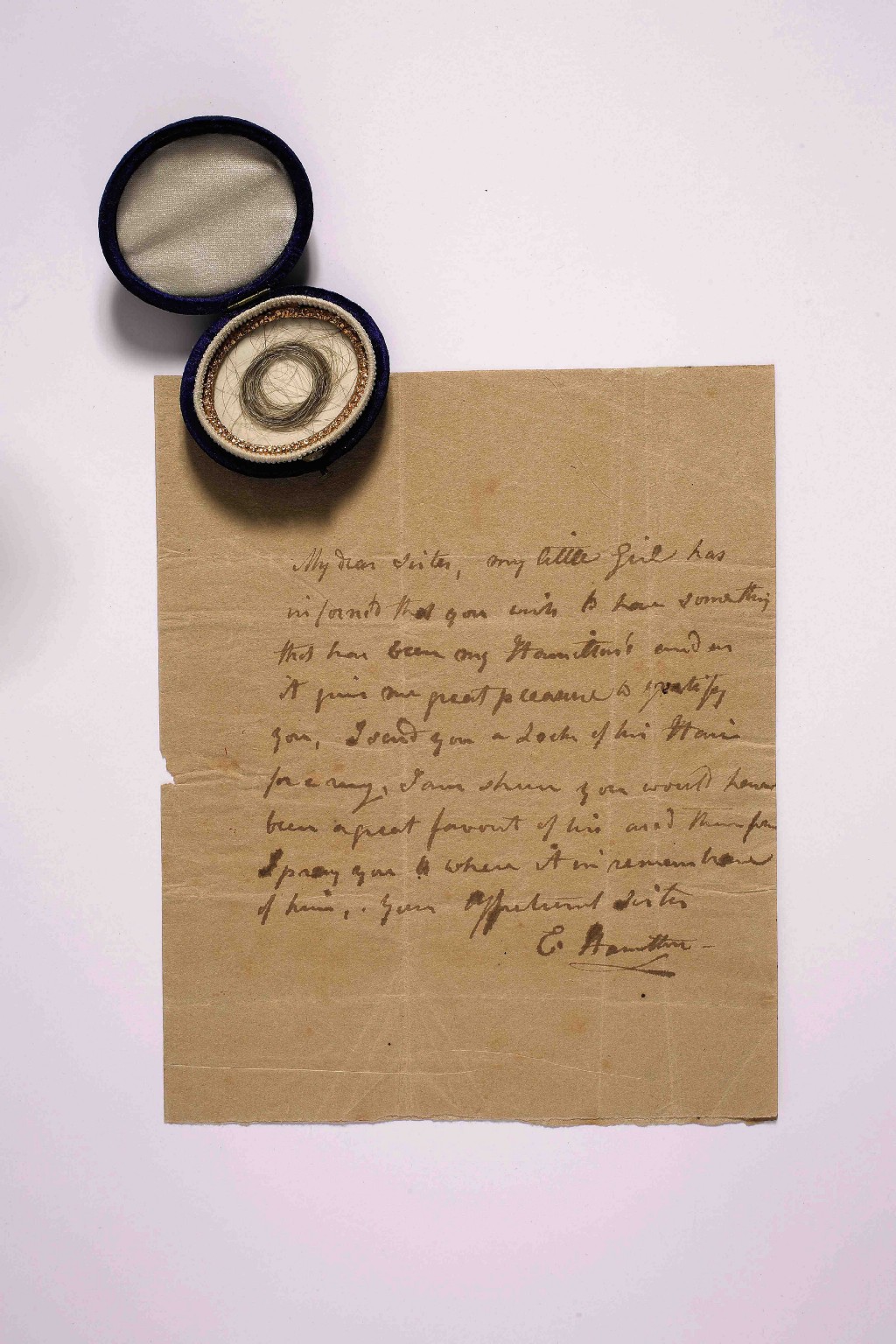
Obviously, the timing couldn’t be better for an auction devoted to the founding father, and this one boasts an “important family archive of letters and manuscripts,” many of which are unknown to curators and collectors. According to Sotheby’s: “The sale, the first of its kind, will tell the story of [Hamilton’s] brief but momentous life through hundreds of documents that have descended in the family for the last two centuries.”
There are legal papers and love letters, several of which are expected to land in the six figures once the auctioneer’s hammer falls. The hair is the only piece of Hamilton’s remains for sale (icky though it may sound, hair is hardly unique at auction), and it is accompanied by a letter written by Hamilton’s wife, Eliza, presenting it as a gift to her sister-in-law, to be used “for a ring.”

Lot 2: Schindler’s Jewelry and Ephemera
You hear the name Oskar Schindler and immediately think Liam Neeson. Fair enough. In the film Schindler’s List (1993), which won seven Academy Awards, Neeson portrayed the famous German industrialist who saved the lives of about 1,200 Jews during the Holocaust. He thus became a household name.
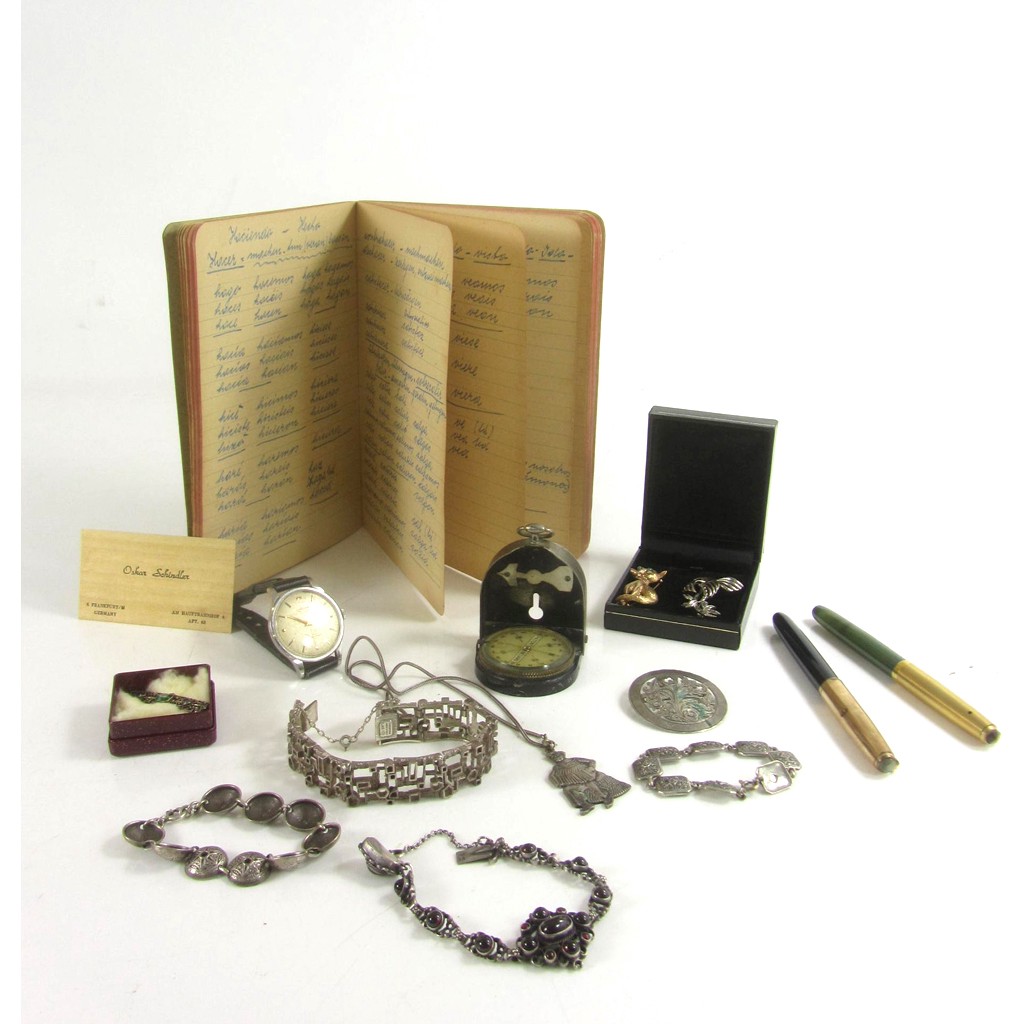
So it’s unsurprising that Schindler’s stuff would appear on the market. In 2013, documents related to his Krakow factory sold for $122,000, and one of his original typed “lists” surfaced on eBay, but the $3-million opening bid was too steep for any buyer. This upcoming lot, which goes to auction in Edinburgh on January 11, is a little different. It contains small, personal items that belonged to Schindler and his wife, as if someone dumped out the contents of their bric-a-brac drawer: a wooden business card bearing Schindler’s name and a Frankfurt address, a notebook of German-Spanish translations, a compass said to have been used by the couple while fleeing Russian troops in 1945; two pens; and miscellaneous jewelry, including a watch, four bracelets, four brooches, and a necklace.
The winning bidder — dear God let him/her be a decent human with good intentions — may secure this strangely intimate assemblage for about £2,000 ($2,500).

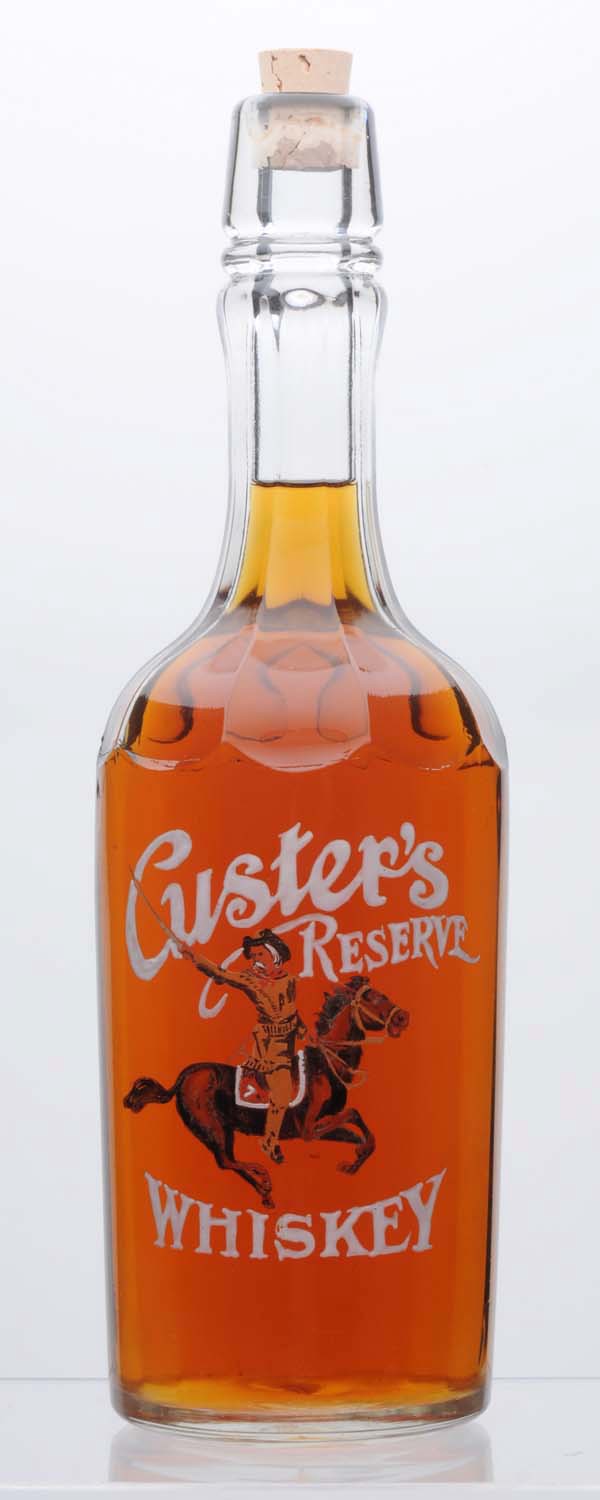
Lot 3: The Wild, Wild West
Among the golden nuggets and antique poker chips to be sold at auction on January 19 in Las Vegas (natch), there are two items that simply must be paired for some real old-timey frontier fun. First up: A mostly full (lightly sipped?) bottle of Custer’s Reserve Whiskey. The back bar bottle depicts the handsome general on horseback, c. 1895. Custer was long dead by then; this “extremely rare” bottle of spirits memorializes the … cough … American hero. With a $10,000 buy-in though, will the winner drink it?
Hell, yes. How else would one prepare to pony up $100,000–200,000 for a Bowie knife later in the day? While there are several dozen knives on offer, one sticks out: a ten-inch blade given by Rezin Bowie, brother of the weapon’s designer, to his friend, Edwin Forrest, a Shakespearean actor from Philadelphia, sometime around 1835. That dramatic provenance “should be of great interest to historians, museums, and militaria enthusiasts worldwide,” according to the auction house.
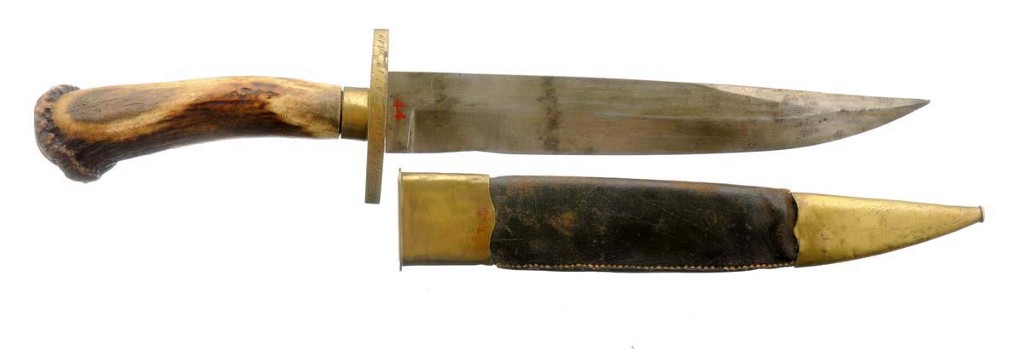
More whiskey?
Rebecca Rego Barry is the author of Rare Books Uncovered: True Stories of Fantastic Finds in Unlikely Places.
Some Nose-Blowing Suggestions
Paper products, reviewed.

This feels like a lie to type, but as recently as five days ago I was someone who could use both of her nostrils to breathe. It was wild. When my organs needed oxygen, I’d simply draw in a breath with my lungs and the air would pass through my nose and down my airway, easy breezy. Nowadays, I do a lot of mouth-breathing—sleeping with my jaw slack, watching TV with sparrow face, and occasionally hacking on the mucus lodged at the back of my throat mid-conversation.
All of this is to say that I’ve spent the better part of a week with sinuses sludgier than your college boyfriend’s one-hitter, and I’ve found myself in a fair amount of precarious situations booger-wise. My snot passport includes a vast and varied sampling of regularly available fibers, and I’ve reviewed them for you here, should you ever find yourself in my shoes:
Tissue
I don’t need to tell you what this is like. You know. Brand-to-brand you’ll see some variance in texture and absorbency, but overall we’re looking at an effective-though-slightly-too-thin format of snot catcher. It’s always a good idea to do your first blow into one half of the tissue, fold it, and then use the second half of the tissue for a second blow in a few minutes. That way your bed or workspace can slowly become a delicate nest of partially-used tissues, awaiting fresh boogers. 8/10—nothing to see here, keep it moving
Paper Towel
The kind I used had a quilted diamond pattern, but I’m pretty sure that it had no bearing on the shittiness of this experience. It was as though I was rubbing my skin with a swath of popcorn ceiling. It was as if my nose was being scraped against someone’s dad’s brick patio. How is this, a bleached home paper product, so violent in texture when all of its closest relatives manage to keep it together for the sake of my happiness? I’m pretty sure “Ow,” was my in-the-moment review, and hours later, my raw skin and I stand by the assessment. 1/10 — your boogers get out, but at what cost?
Charmin Toilet Paper
Have you ever had an orgasm? This is less good than that, but after the agony of the paper towel, it’s an homage in terms of relief. I honestly didn’t understand why the pooping bears were always so happy in Charmin commercials, specifically because: whose asscrack is sensitive enough to elicit that much satisfaction from a wipe? But after rubbing this toilet paper upon my parched, exhausted face, I get it. I am the horny poop bear. 10/10—congrats, you’re living it up

My Own Hands
Listen, there are plenty of people out there who will front hardcore like they don’t empty their sinuses into their own hands when they’re alone in the shower, but I’m not one of those people. I excrete. It’s fine. This method is great because you’re breathing in steam and your boogs are all melted and malleable, so it’s a strategically advantageous time to clean the ol’ pipes. Plus you get to rinse all of the byproduct right down the drain then and there. No mess! No paper waste! The only downside is that you still ostensibly have a hygiene routine to complete afterward, which leaves a couple minutes for fresh boogs to drop, which will then melt in the steam and leave you with a runny nose. So my advice would be to do this as many times as you want during your shower, but make sure you do one right before you turn off the water and step out for peak impact. 6/10—fleeting relief is still relief tbh
Textured Napkin
Have you forgotten the paper towel? My nose hasn’t. Depending upon which relative’s post-holiday kitchen you’re standing in, these may be plentifully available, but I’d still advise you to make the trek to the bathroom to get your hands on the good stuff. In 2017 it is an act of zen to orchestrate a win when you can. 4/10—c’mon man
All Our Other Lives
Looking back at what was and what might have been.
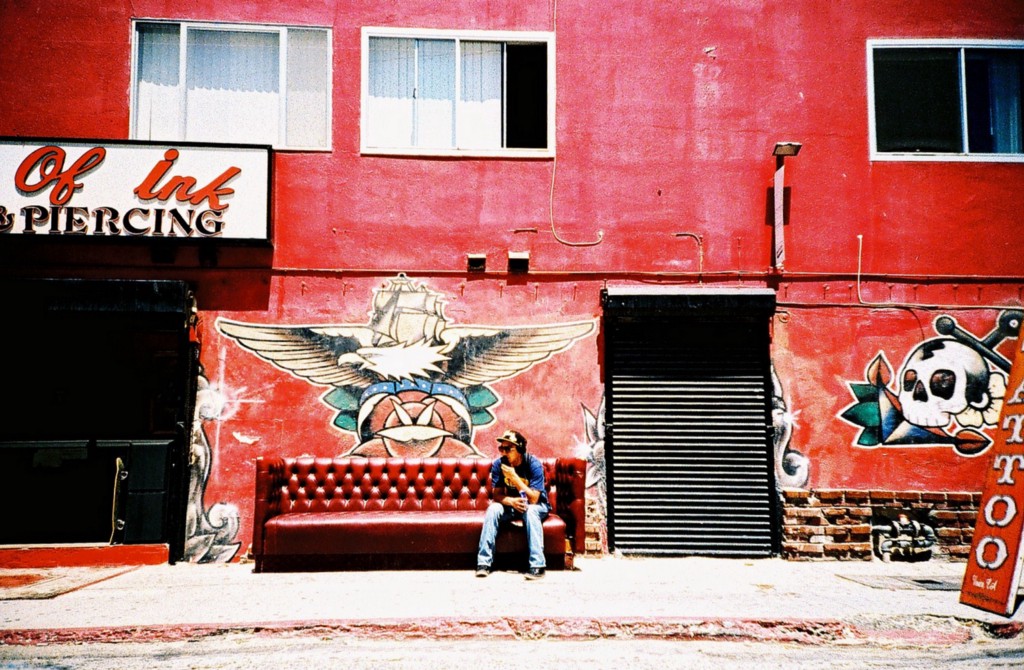
Thanks to everyone for their fantastic contributions to In My Other Life, The Awl’s farewell to 2016. As you gradually make your way back into the actual life you are living now, take some time to reflect on what you might be doing otherwise. If you missed any entries in the series or just want to read some again, here are the participants and their pieces:
Bryan Washington, Tom Scocca, Anna Wiener, Maud Newton, Jacqui Shine, Carrie Frye, Betsy Morais, Ethan Chiel, Lindsay Robertson, Ryan Bradley, John Dziuban, Jane Hu, Rosa Lyster, Kevin Nguyen, Jo Livingstone, Miranda Popkey, Rachel Monroe, Dayna Evans, Zan Romanoff, Brent Cox and Meaghan O’Connell.
The xx, "Say Something Loving"
In a couple of days you won’t even remember you were gone.
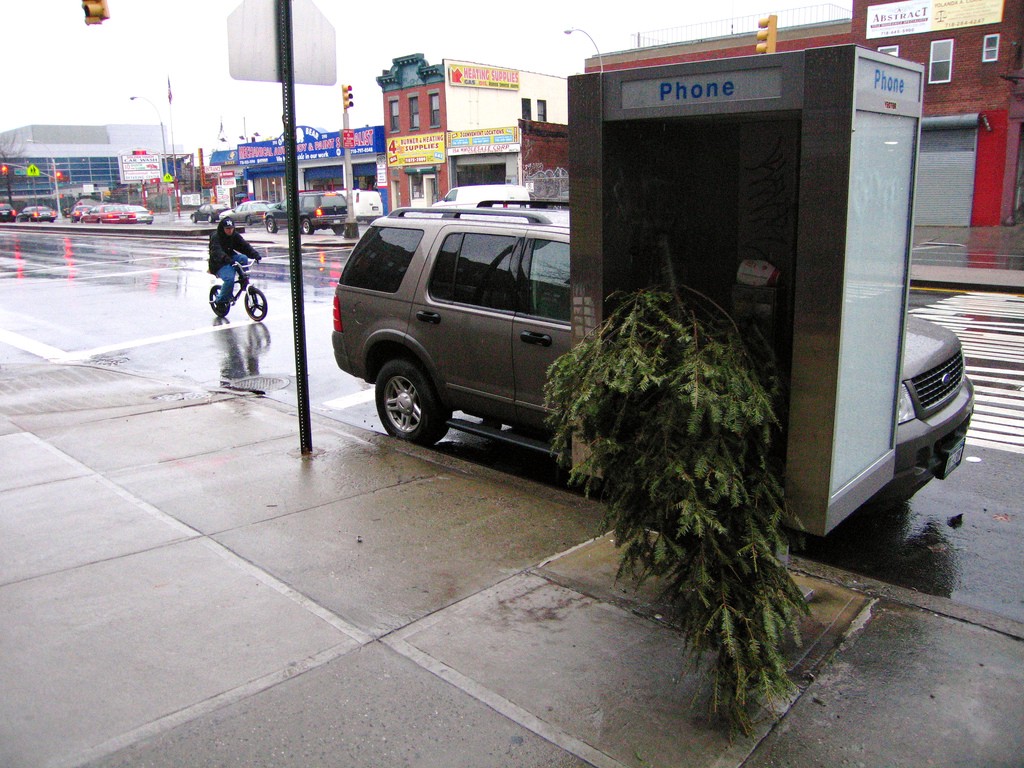
Remember right around Thanksgiving when you told yourself, “If I can just make it through the holidays everything will be alright?” Well, you’re through the holidays now, how’s it looking for you? That’s what I thought. Don’t feel too bad. It happens every year. We are so overwhelmed by the gauntlet of parties and family and enforced joy we start running in late November that all we can focus on is making it past that; of course we never consider that come January the real torpor and misery, fueled by the continuing lack of sun and the seeming hopelessness that spring will ever come to save us, kick in. Whatever you think you just survived is nothing compared to what you’re facing down until about April. Still, I don’t want to start you off on a completely bleak note, so I will offer you two things to keep in mind that might cheer you up: 1) It’s going to be at least eleven months before you hear “Winter Wonderland” again, and 2) the way things are going there might not be a next Christmas to worry about at all. Welcome back! Here’s something new from The xx. Enjoy.
New York City, December 29, 2016

★★ The white fog on the river was the only vaguely bright thing in the soggy darkness of the middle of the day. Sometimes the rain was audible against the building over the sound of the video games; at one point a transparent blob of water ran down on of the rigging ropes swaying outside the window. The fresh air coming in the window was so damp it felt mild at first. Once the day had been fully wasted, the last light came orange and greenish-gold through the newly opened edge of the gloom. It was going to be one of those spectacular makeup sunsets, the brooding clouds now presenting themselves not as the sun’s foes but as helpful partners, catching the spilled color and pouring it back down on the city with excessive generosity: Here, here, we weren’t withholding anything, have it, have it all. A crane in New Jersey flashed like freshly cut copper. Violet masses of lower clouds reared in the north. Amid the wild color, the rift in the west had turned a calm and unassuming blue. One cloud, eggish but pointy, hovered below the others like the kind of spaceships in movies nowadays. Outside after dinner, there was a star in the sky, and another, and two more. The count could slowly get up to a dozen if the eyes waited long enough, in a dark enough and still enough spot, for the fainter ones to reveal themselves.
Yakkin' About Tinfoil
In my other life, I’m a weird historian.
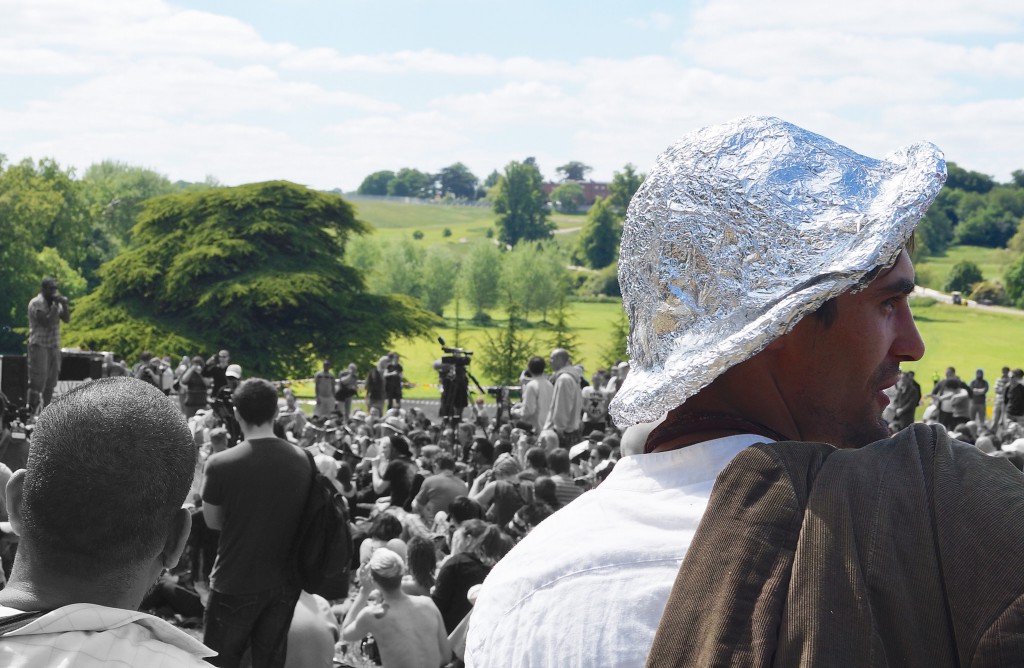
Before I ever learned history, I learned that there were histories that were rumored to exist behind them.
I grew up during the Reagan Administration, and that was a very special time for not ever being trustful of what was actually going on. This was true even without searching out the zines and pamphlets and tiny press publications, as I did later in life. When Ronald Reagan ran for president against Jimmy Carter, at issue was the Iran hostage crisis, in which the Shah of Iran was overthrown and the overthrowers seized the American Embassy in Tehran and held Americans hostage. The lack of resolution of this crisis (and failed rescue mission) was held to the account of the then-president, Mr. Carter, who lost. On Inauguration Day, when Mr. Reagan was sworn in, the hostages were released. I was a child, and that timing seemed seriously messed up to me, like Iran had picked a side in the election and was helping.
This later morphed into the Iran-Contra Scandal — a demotion from crisis, apparently — which provided the rest of the decade with a quiet backdrop of hearings and non-denial denials and eventual pardons. Coupled with the faith in institutions that we were schooled in was the sense that the institutions were deeper under the water line than they appeared, and that the mechanisms by which they operated were immoral if not unknowable, and for our own good, for better or for worse. I suppose it was a comfort to some, but to me it was, again, seriously messed up.
Then came The Octopus. It’s a bit fuzzy where I first read of it — I think the Village Voice? — but the nut of it is that a sometime-journalist named Danny Casolaro was found dead in a hotel room in Martinsburg, West Virginia in August of 1991. His body was found on top of a razor blade in a tub, and his wrists were cut. He was on assignment, he told his confederates, working a story in which he’d uncovered and exposed a group of intelligence officers — active and retired, domestic and foreign — who were attempting to exert hidden influence on the events of the world. He dubbed this “The Octopus,” and warned friends and family that The Octopus was onto him; if anything happened to him, it would not be an accident. After which something promptly happened to him that looked like an accident.
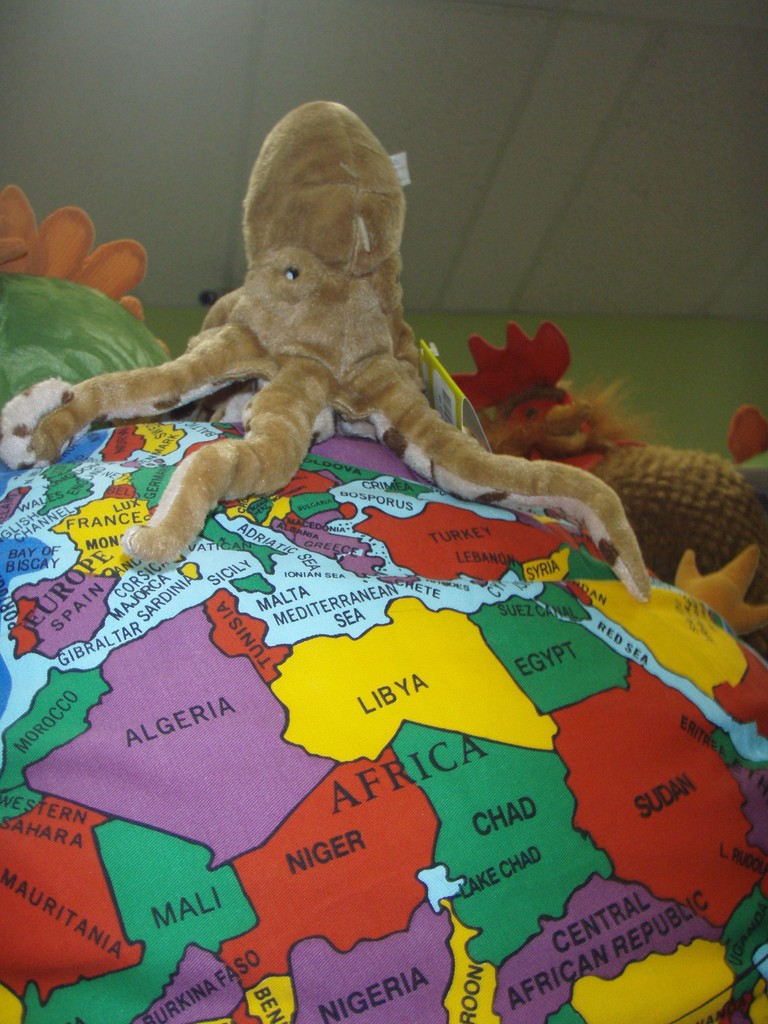
The details of The Octopus canon were terribly complex but for once set out in plain text and not hinted at, stretching back to the J.F.K. assassination and skidding through Watergate and the Iran-Contra Affair, a cast of characters that matched up well with conspiracy theories that preceded it. What set it apart is that it purported to be the Unified Field Theory of how the government actually worked, a glimpse at a precursor to what now is respectfully called the Deep State. (If you’re interested, and of course you are, wade into this.)
Around the same time the Gulf War is shockin’ and awein’, so no reason that Casolaro’s mysterious demise should be remembered as anything as fodder for a basic cable anthology show. But it was covered at the time, not only in the Village Voice, but also in Vanity Fair and Spy (and the NYT). The MacGuffin for the coverage at the time was a piece of software called PROMIS, intended to be used as a catchall surveillance tool crawling all the US law enforcement databases, which was developed and then (allegedly!) stolen and then (allegedly!) sold, etc. It was very cinematic, and it had the ring of enough truth to drive home the concept that the events of history —as read in a book or in the newspaper — are quite possibly incomplete events, and maybe history is weirder than it’s comfortable to admit.
And what’s the point of having all this weird history if we’re just going to forget it? This is why in my other life I am a Weird Historian.

Conspiracy was an enormously dumb catch-all phrase long before Alex Jones spittled it into oblivion. To speak of the unknowables of the world as conspiracy reveals a naïve certainty that not only everything happens for a reason, but also that the reason is that people chose to make it so. This is fine when talking about who shot J.F.K., as it is hard to make the argument that no one shot J.F.K. Even bona fide conspiracy theorists (i.e., people whose interests prevent them from being a polite dinner party guest) avoid the label at all costs. Conspiracy theorists sometimes mistake the trees in the forest as fingerprints, and conspiracy theorists need a good, dimly-lit secret hideout in which to really uncover the hidden truths. Conspiracy theorists are still working on a more respectable word that is as succinct and meaningful as sheeple, but will keep using sheeple in the meantime.
A Weird Historian, in comparison, is not solely a conspiracy enthusiast, but a buff of the stories that didn’t make it into the books. Earlier this month, the 75th anniversary of Pearl Harbor living in infamy was observed. But it was also, as dubbed by Alexander Cockburn, a day of “one of the great unsayables of 20th-Century American history,” as there are indications that the F.D.R. Administration had foreknowledge of the attack, allowing it to happen to sway isolationist sentiment in the U.S. to support declarations of war. This is hotly contested, of course, as it implies that 2,400 servicemen and -women were sacrificed for the sake of strategy.
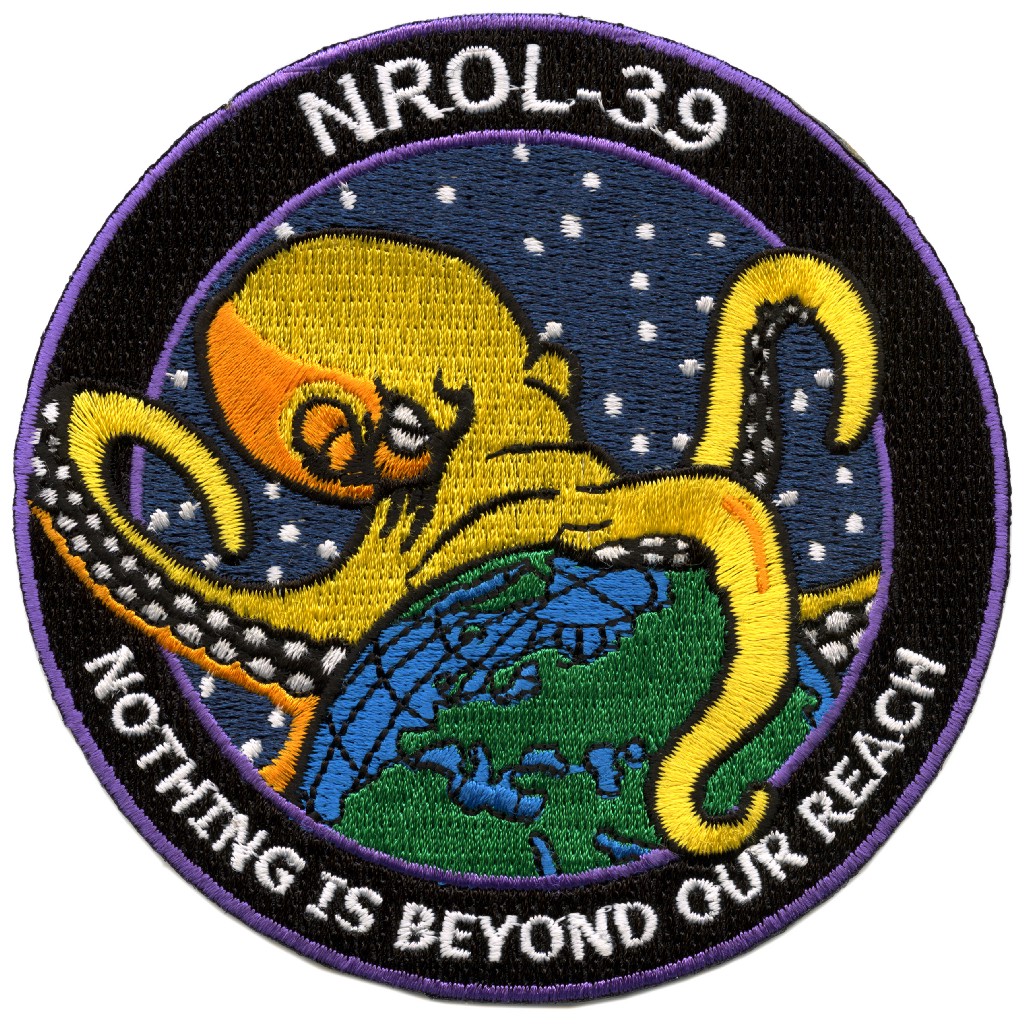
Those who would convince you of the merit of the claims would show you testimony and interviews detailing how U.S. cryptoanalysists and Bletchley Park in England had cracked Japan’s cipher used to communicate with its diplomats, and how U.S Naval intelligence was monitoring the Japanese fleet in the South Pacific as it zeroed in on Hawaii. Arguing whether this did or did not happen has traditionally been aimed at tarnishing or protecting the reputation of F.D.R., but in my own personal work it’s just another bright shiny thing that I have polished and stashed away; another reminder that causation is impossibly complex and that the truth exists as a prize to be won.
And remember the Bonus Army? When F.D.R. was inaugurated for the first time, a fascist military coup was plotted and prevented, when the spiritual leader of the Bonus Army, Gen. (Ret.) Smedley Butler, then the most decorated Marine ever, tapped by the cabal of conservative businessmen to be the figurehead and rouse the troops, blew the whistle. Reaction at the time was dismissive, and the (first!) House Committee on Un-American Activities took testimony of Butler and one principal but pressed no charges. Is that not a bit of pertinent and interesting historical information? Newt Gingrich, a prominent advisor to the incoming presidential administration has admitted to a goal of rolling back F.D.R.’s New Deal — is it not relevant that at the time of the inception of the New Deal disgruntled financiers tried to deprive F.D.R. of office before he got the chance?
This bit of historical ephemera is by no means secret. But this is to me so much more interesting than the maybe-alien craft that crashed in Roswell, NM, and even more interesting than the giant U.F.O. that was photographed and fired upon over Los Angeles during World War II, which is very interesting in the sense that barely anyone remembers it. It was in January of 1942, the West Coast was on blackout (i.e., no exterior lights after dark that would serve as targets for enemy bombing runs) as we were at war with Japan, and an enormous craft floated over Santa Monica, and took two thousand rounds of anti-aircraft shells. (Here’s a page with repros of the reporting at the time.) Maybe that thing was an alien craft or an interdimensional blimp or a floating space elephant. We don’t know. But it didn’t start a war and it didn’t nearly overthrow the president of the United States. Weird.
This is not to say that weird history does not involve groups of people authoring events in a secretive fashion — more specifically, weird history is not contingent on groups of people authoring events in a secretive fashion. See, for example, The Octopus, though my personal Weird Historian opinion is to treat The Octopus how a Unitarian treats the Bible and not how a Southern Baptist does. If to a hammer everything looks like a nail, then in weird history every nail does not look like the Illuminati or the Trilateral Commission. Every nail looks like it leads to a whole lot of more interesting nails. Take, say, 9/11. Some think that actors other than Al Qaida were responsible for 9/11, to the extent that jet fuel melting steel is now a dad joke. Weird history would stipulate that 9/11 is a very interesting prism through which to view the events of the day.
History is repeated first as farce and then as tragedy. Weird history is farce and tragedy in the first place.

Something uncomfortable about this other life is when I run into anyone from outside the U.S. and Western Europe who shares these interests, they tend to laugh and laugh at me. Apparently, in the context of the rest of the planet, I am on the naïve end of the spectrum of foolishness, whispering about things that everyone else already knows. Why, my own very country, they remind me, was the single greatest secret author of events in the past two hundred years — a very impressive resume, including Iran in 1953 and pretty much the entirety of the Caribbean, Eastern Europe and Latin America. Hell, even Gen. Butler came to wide renown post-retirement by claiming he had been a Gangster For Capitalism, commanding forces that made non-U.S. parts of the world safe for U.S. companies. What am I, my foreign friends ask, some kind of asshole?
I see their point.
I foolishly presumed all citizens of every nation were taught that they are inviolable, that they are imbued with talent and grace exceeding that of citizens of all other countries and precincts, and that when the grace of God flows, it flows through the instruments of their nations only. Though when I think of it, was it implicit that the exceptionalism was supposed to be construed with a wink? You’re unique and special, just like everyone else? Or is that a conclusion I swiped from someone on Twitter citing Howard Zimmerman?
This other life — the one that I’ve decided I’ve been living for so very long — is very timely, what with the recent turn of events. Another life working for a think tank with the word PROSPERITY or GROWTH on the letterhead might have been more beneficial, but I don’t think they let you pick that particular other life so capriciously. As long as history keeps being weird, I’m not going to run out of things to do.
In My Other Life, a collection of essays from writers we love, is The Awl’s goodbye to 2016.
The Myth of Monsters
In my other life, I don’t believe in them.
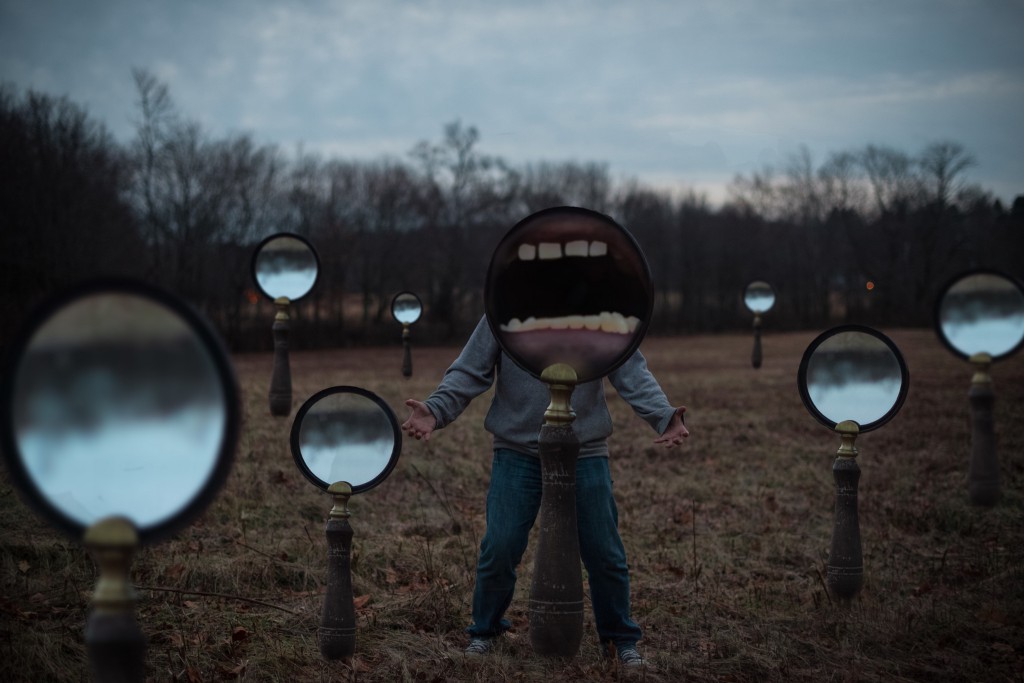
I turn thirty first thing in January: the last decade of my life has been in large part defined by what amounts to nothing more than a very, very, very bad relationship. I’m so used to reciting the story that at this point it’s rote — here’s what I did, what he did, what we said and how it felt and why it hurt so fucking much, and how I think about myself in relationship to that pain.
The confession is a form of penance: for years I have felt required to tell everyone about the worst thing I ever did, the most intimate, excruciating things that have ever happened to me, because I was so focused on the parts of it that were my fault, and I believed that branding myself with my shame was the only way to keep me from doing it — or something like it — ever again. I needed to be reminded, and I needed everyone around me to know, so they would watch for it, so I wouldn’t end up hurting them, too. Kayne West, y’all: everybody knows I’m a motherfucking monster.
We’ve been embracing monstrosity lately, women have, or we’ve been trying to. The most popular thing I’ve ever put on my Tumblr, by tens of thousands of notes, is a quote from a Kelly Link interview: “I’d rather watch shows about teenaged girls figuring out what it means to be a monster,” she says of her television-watching habits. It sounds badass, right, another word that gets used a lot around how women behave. I don’t care if you fucking like it. Right?
But the thing about monsters is that they are born from wounds: vampires and werewolves both transmit themselves specifically by breaking the skin. I was only as vicious to everyone else as I was to myself, and I was willing to take myself the fuck apart. This is what guts me when we talk about “self-harm” as if it’s a particular category of behaviors, as opposed to: whatever you’re using to make sure you keep feeling as shitty as you can bear. Or as if the harm is ever actually limited to your self. I didn’t cut; I didn’t starve; I didn’t use drugs or alcohol. I was too invested in looking like a good girl for any of the obvious ones. Instead I used the people around me. Its scars are invisible, which only encourages me to pretend they aren’t real.
I’ve been struggling this year with what it means to know that I will spend the rest of my life being the person who did those things. Because I can’t erase them, and I can’t forget them, and I don’t want to. I think a certain amount of regret is healthy — adult, even. The ability to accept that not everything happens for a reason, that a happy present does not excuse a fucked-up past. Some things happen, and they are bad, and they are your fault. Taking on responsibility for your own actions is the most basic, AA-truism-level step towards eventually being able to change them.
But also: if I stay wounded, I will always stay a monster. Being a monster is tempting. It sounds strong and defiant, like everything women aren’t going to be scared of anymore. But that’s not what a monster is, or maybe not the kind of monster I am when I am one. A monstrous woman — one who acts out of her boundaries, out of turn — is not the same thing as a monstrous person, who causes other people real, serious pain. I want to be tough and I want to be fearless and I want to say “I don’t care if you fucking like it.” But I also want to allow people to love me without being terrorized by the sense that I will hurt them, or that they will hurt me: that when you get down to the deepest parts of me, all you find is a monster standing guard over an old, open wound.
I’m the one who has kept it open all this time, as if always being hurt were a useful form of penance. When in fact allowing it to close is the only thing that will keep me safe from it, from the wild ways we act when we think all there is to feel is pain.
In My Other Life, a collection of essays from writers we love, is The Awl’s goodbye to 2016.

